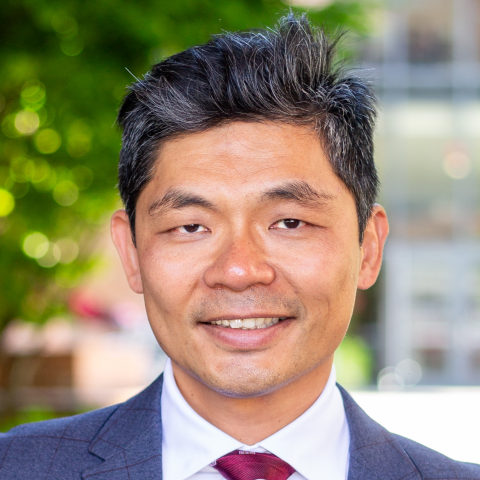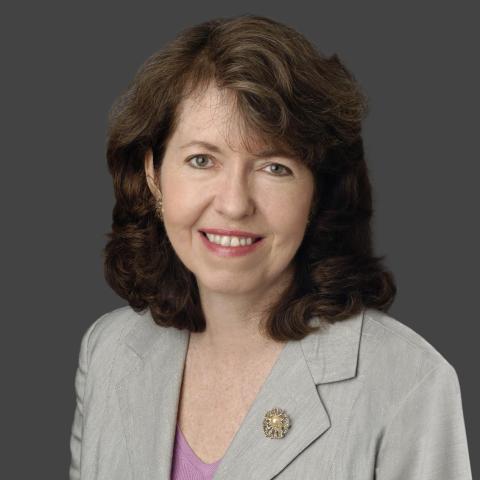In a competition for the most influential American woman of the 19th century, Margaret Fuller's name would not appear on many lists. Fuller—a scholar, critic and feminist—is not as well-known as Emily Dickinson, Harriet Beecher Stowe, Louisa May Alcott, Elizabeth Cady Stanton, Clara Barton or other women whose ideas, work and writing made vital contributions to our history.
Readers can be forgiven, then, if, upon hearing Fuller's name, they feel a bit uncertain about who she was and what she did. John Matteson performs a service in producing a readable, if somewhat overlong, biography that will introduce this learned, prolific and eccentric American to a wider audience.
Fuller, born near Boston in 1810, was a great intellectual—in Mr. Matteson's words, "the best-read woman in America and the one most renowned for her intelligence." She was a child prodigy, home-schooled by a martinet of a father whose love she sought to win by excelling in the study of Latin, Greek, German and other subjects usually reserved for boys.
She was so learned—and so sure of her abilities, one might add—that in her 30s she accomplished a feat no woman before her had done: She secured permission from Harvard College to use its library to research a book (on the American West). Mr. Matteson quotes one of her earlier biographers, a Harvard student at the time, who recalled the extraordinary sight of the female scholar invading the "sacred precincts" of Harvard's reading room.
Margaret Fuller was quintessentially American in that she was constantly reinventing herself and always aiming at self-improvement. Note the plural in the book's title, The Lives of Margaret Fuller. Mr. Matteson presents his subject as a woman of many incarnations.
Her first claim to fame was as the leading female figure in the New England-born philosophy known as Transcendentalism. She was close to the far more famous men in the movement—Emerson, Thoreau, Hawthorne, Bronson Alcott—and influenced their thinking. She taught at Alcott's progressive Temple School in Boston. Emerson recruited her to be the founding editor of the Dial, the Transcendentalist journal, which published the pre-eminent thinkers of the day.
Fuller was in demand as a "conversationalist" and for a while earned her living appearing at women-only seminars in Boston, where she would opine on literature, history, philosophy and other subjects on which the ladies' Harvard-educated husbands, fathers and brothers were already conversant. She wanted to redress the errors of female education, and in a sense the conversations were intended to replace the college education that the women had been denied. She aimed to add rigor and substance to the "impressions" that her audience held of various subjects or, as she wrote, "to turn these impressions into thoughts, & systematize these thoughts."
At the Dial, Fuller caught the attention of a brash, young newspaper editor in New York City, Horace Greeley. At Greeley's invitationI imagine him urging her to go southwest, young womanshe moved to Manhattan and became the first literary editor of the New York Tribune.
When Fuller moved to Europe a few years later, she entered yet another incarnation. She became the first foreign correspondent of any American newspaper, sending home spirited dispatches to the New York Tribune from London, Edinburgh, Paris and other places on the Continent. She began to write about poverty and other social issues, eventually denouncing capitalism as heartless and becoming a socialist. The "true aristocracy of a nation, the only really noble" one was, she wrote, "the laboring classes."
In Rome, she covered the Italian revolution of 1848—and along the way married an impoverished Italian nobleman after becoming pregnant by him out of wedlock. Here her story takes a tragic turn. In 1850, when sailing home to America with her husband and son, her ship encountered a hurricane and was wrecked a few miles off Fire Island, N.Y. Her death by drowning, at the age of 40, made her more famous than she had been during her short life.
Fuller may have been a riveting speaker, but her writing was often a different matter. It could be too scholarly to be accessible to a wide audience. In discussing one of her essays for the Dial, Mr. Matteson refers to the "density of the literary and historical allusions," which leaves the "gasping reader" struggling to absorb references to Genesis, the Odyssey, Dante, Petrarch, Goethe, Michelangelo, Shakespeare, Wordsworth and George Sand.
Her most lasting work is Woman in the Nineteenth Century, which demanded legal equality for women. The book was published in 1845, three years before the famous declaration of women's rights at Seneca Falls, N.Y. Its clarion call for the liberation of women came in its closing pages: "But if you ask me what office they [women] may fill; I reply—any. I do not care what case you put: let them be sea-captains, if you will."
Woman in the Nineteenth Century is often deemed the first major work of American feminism. Mr. Matteson calls it "ground-breaking" and a "striking intellectual performance." But he also cites Edgar Allan Poe's review arguing that its brilliance worked against it. Poe raved about the book and called Fuller a woman of "high genius." At the same time, he regarded her as an anomaly—not as an example of what other women might become given education and encouragement.
One especially enjoyable aspect of The Lives of Margaret Fuller is the abundance of quotations from Fuller's letters and diaries. It was a sentimental age, Mr. Matteson informs us, and Fuller's emotional life was intense. In keeping with the custom of the day, she wrote it all down—her struggles with ne'er-do-well siblings, her tiffs with a series of lady friends, her sad attempts at romance.
The august figure of Ralph Waldo Emerson, in whose home she was a frequent guest, comes alive in Fuller's private papers as cerebral and unfeeling, especially in his marriage. She described in her journal how, during long walks together near Walden Pond, the great man opined on marriage. Love is not eternal, he told her, and "the soul knows nothing of marriage, in the sense of a permanent union between two existences." Meanwhile, Emerson's wife, Lidian, who was excluded from her husband's walks with Fuller, expressed her envy of Fuller in tearful scenes. Fuller—in a cerebral mood herself—dismissed Lidian's outbursts as a "mere sick moment."
Mr. Matteson, who won a Pulitzer Prize for Eden's Outcasts, a biography of the Alcotts, puts Fuller's life in New England in rich context. The leading figures of Boston's intellectual set—Peabodys, Howes, Channings, Wards, Holmeses, Adamses—wander in and out of Fuller's story. He is less assured in describing her sojourns in New York and Europe, and the narrative lags when she leaves Boston. But then, Fuller traveled in less interesting company in those other places.
Fuller was something of a social misfit. It didn't help that she was plain, walked chin-forward due to a slight curvature of her spine, and had a squint because of nearsightedness. Hawthorne found her coarse and tyrannical. She once boasted that "I now know all the people worth knowing in America, and I find no intellect comparable to my own."
Such arrogance aside, Fuller believed that positive social change began with the liberal education of individual men—and women. As Mr. Matteson concludes, that radical, liberating idea—and the example of Fuller's own life—may be her best legacy to future generations of Americans.



















